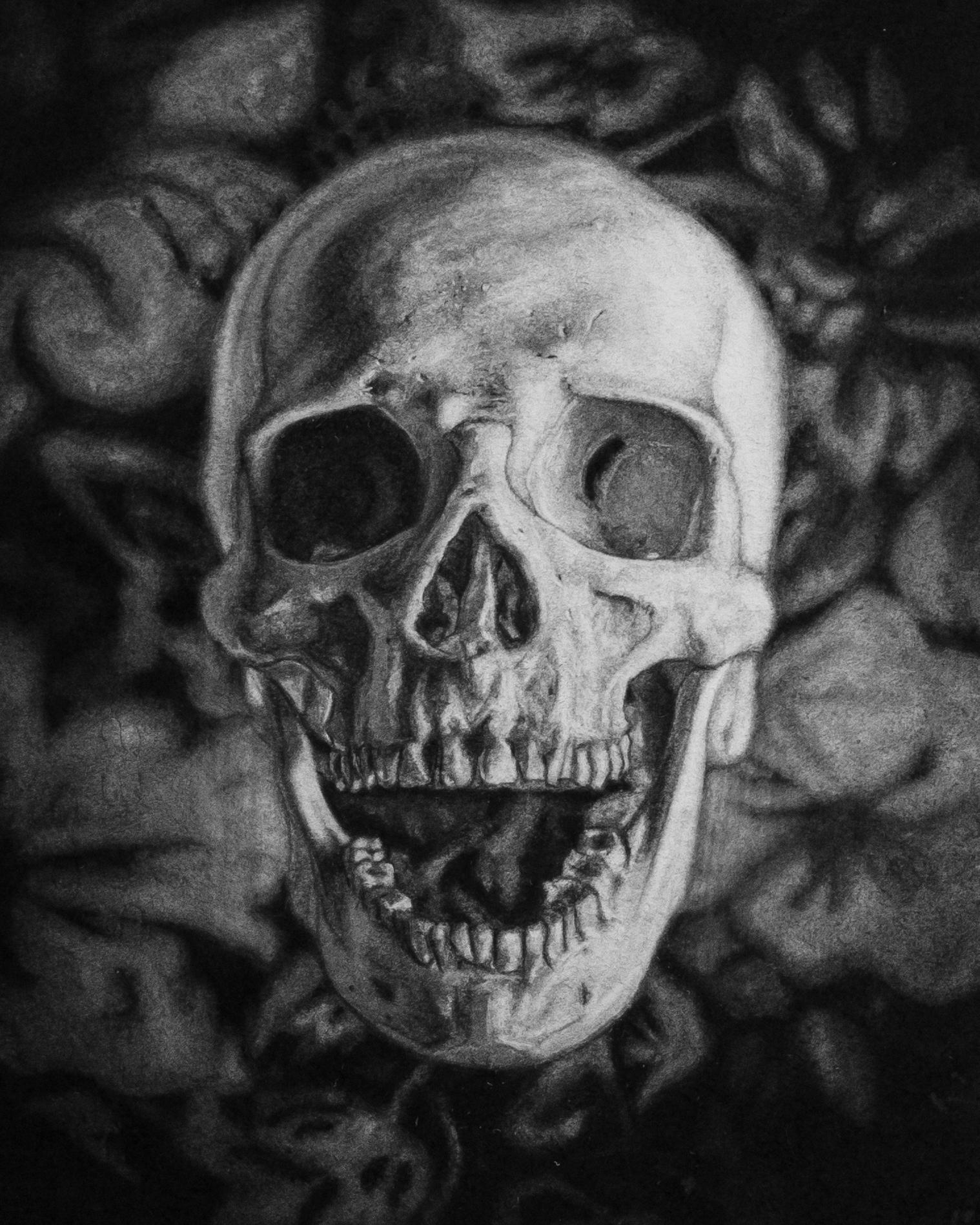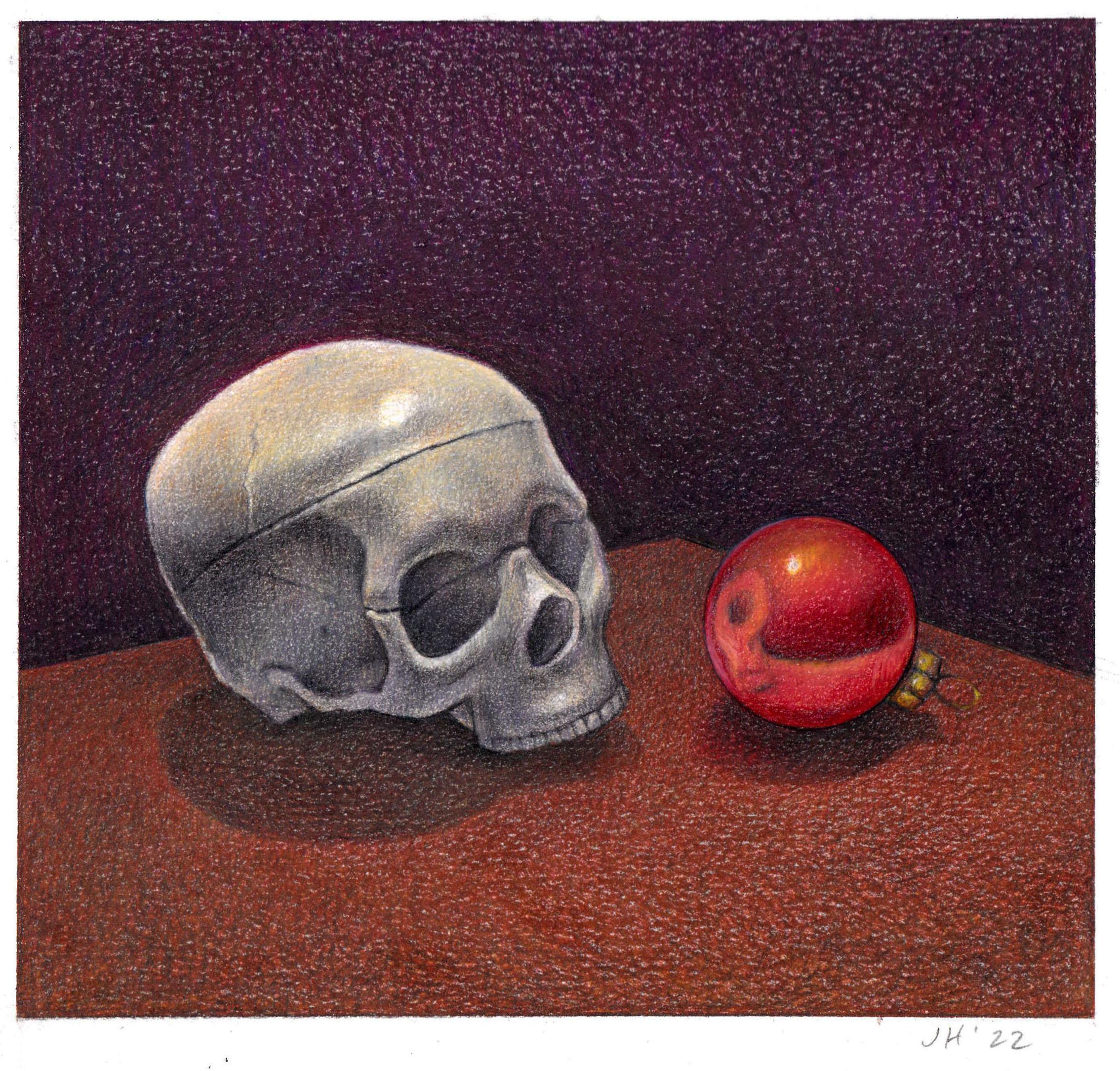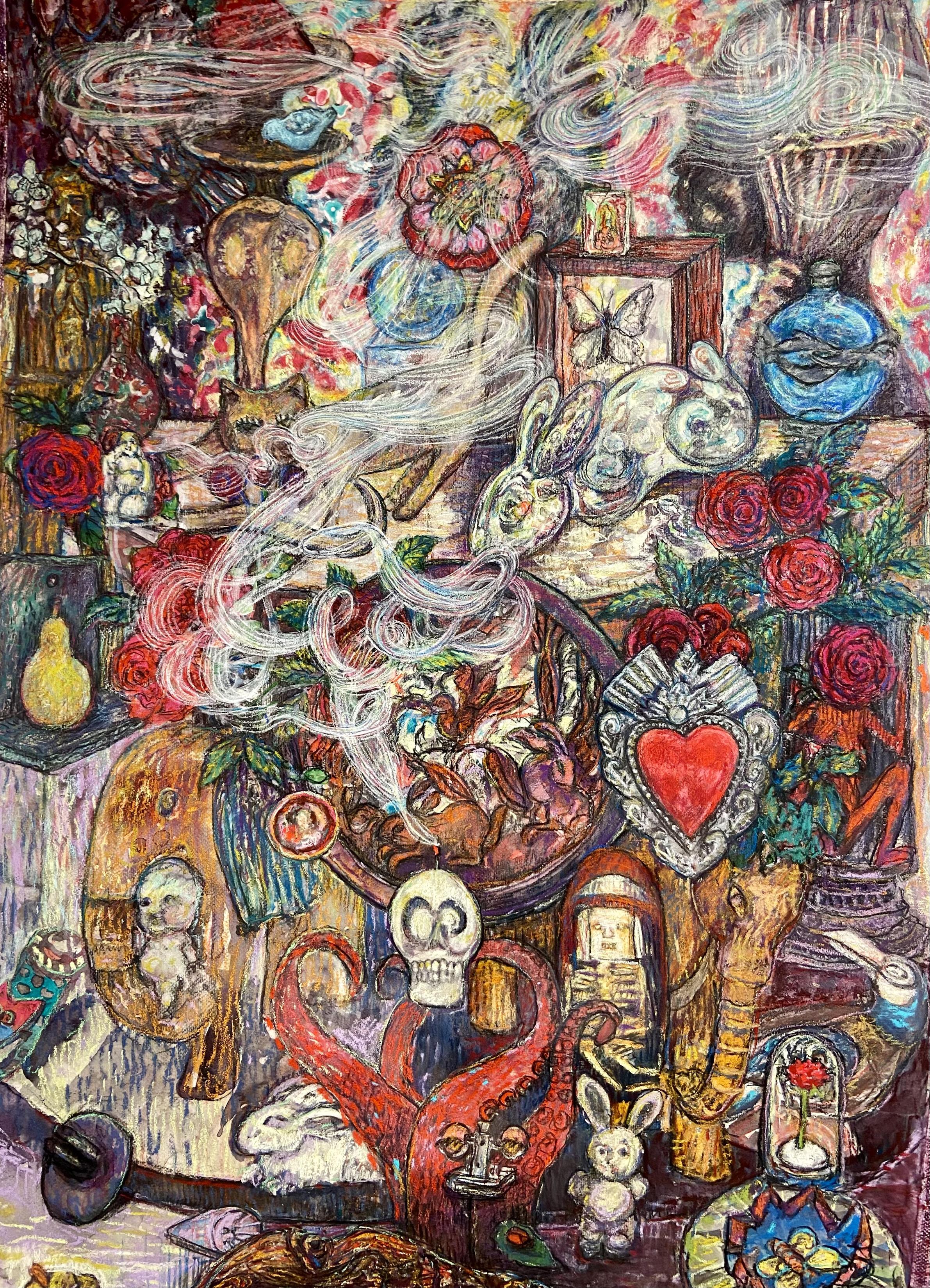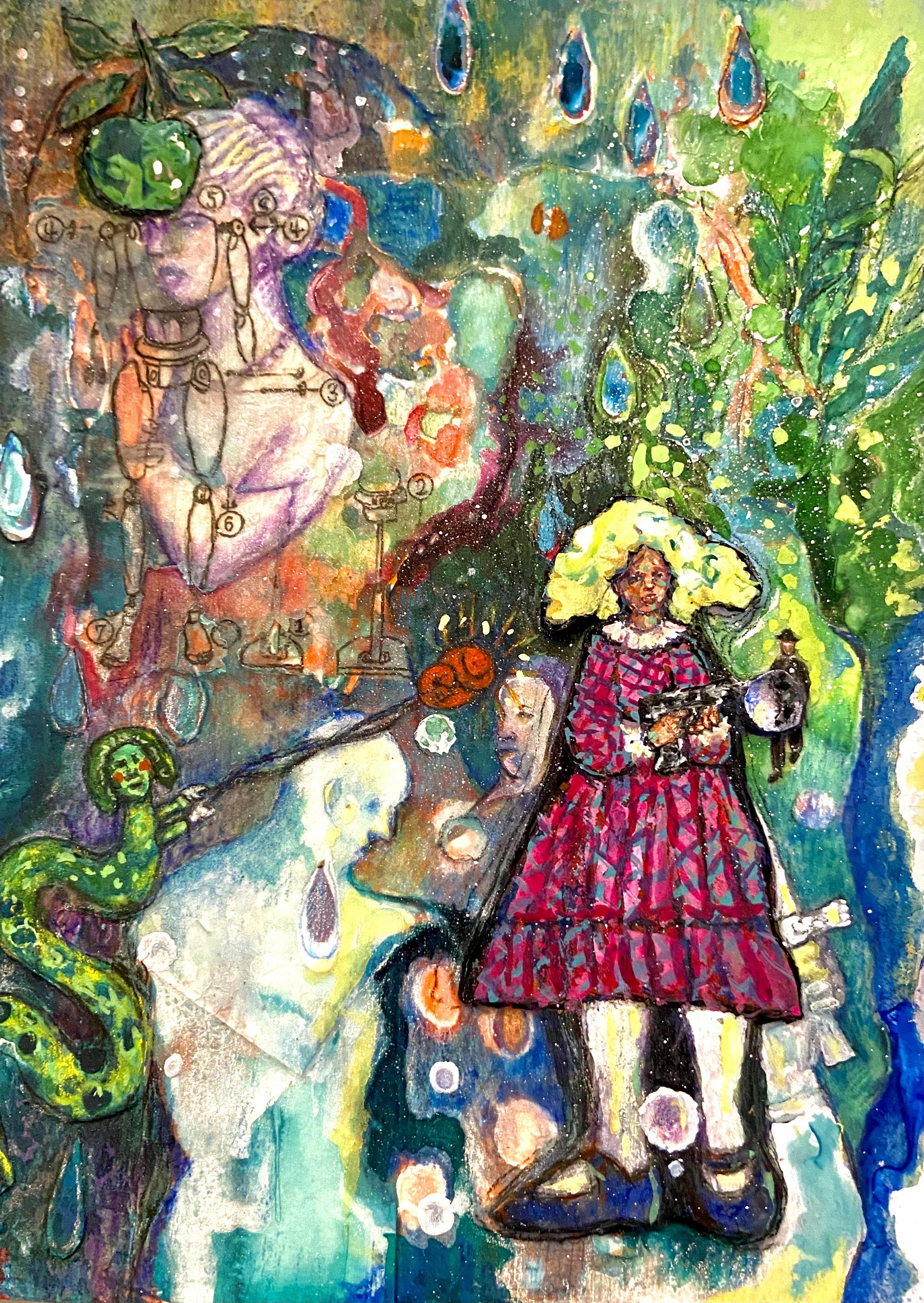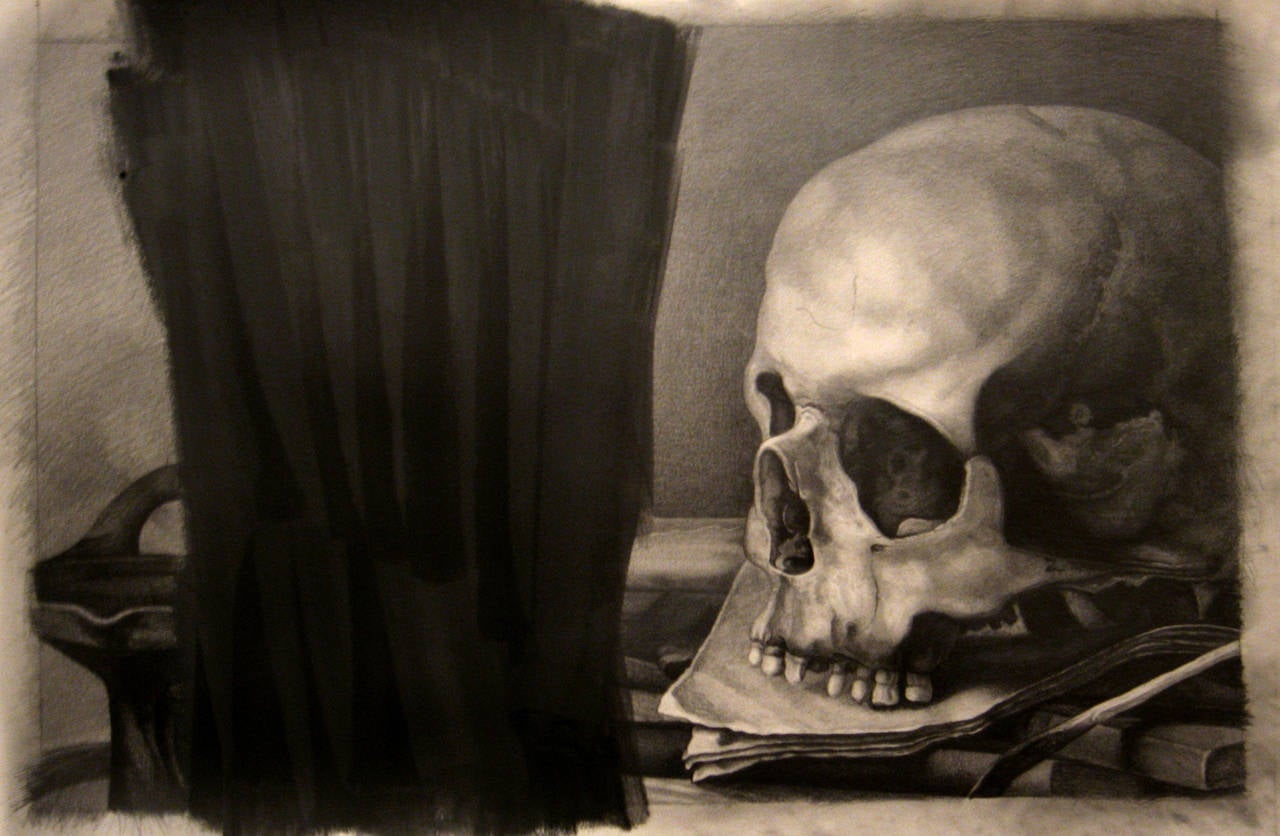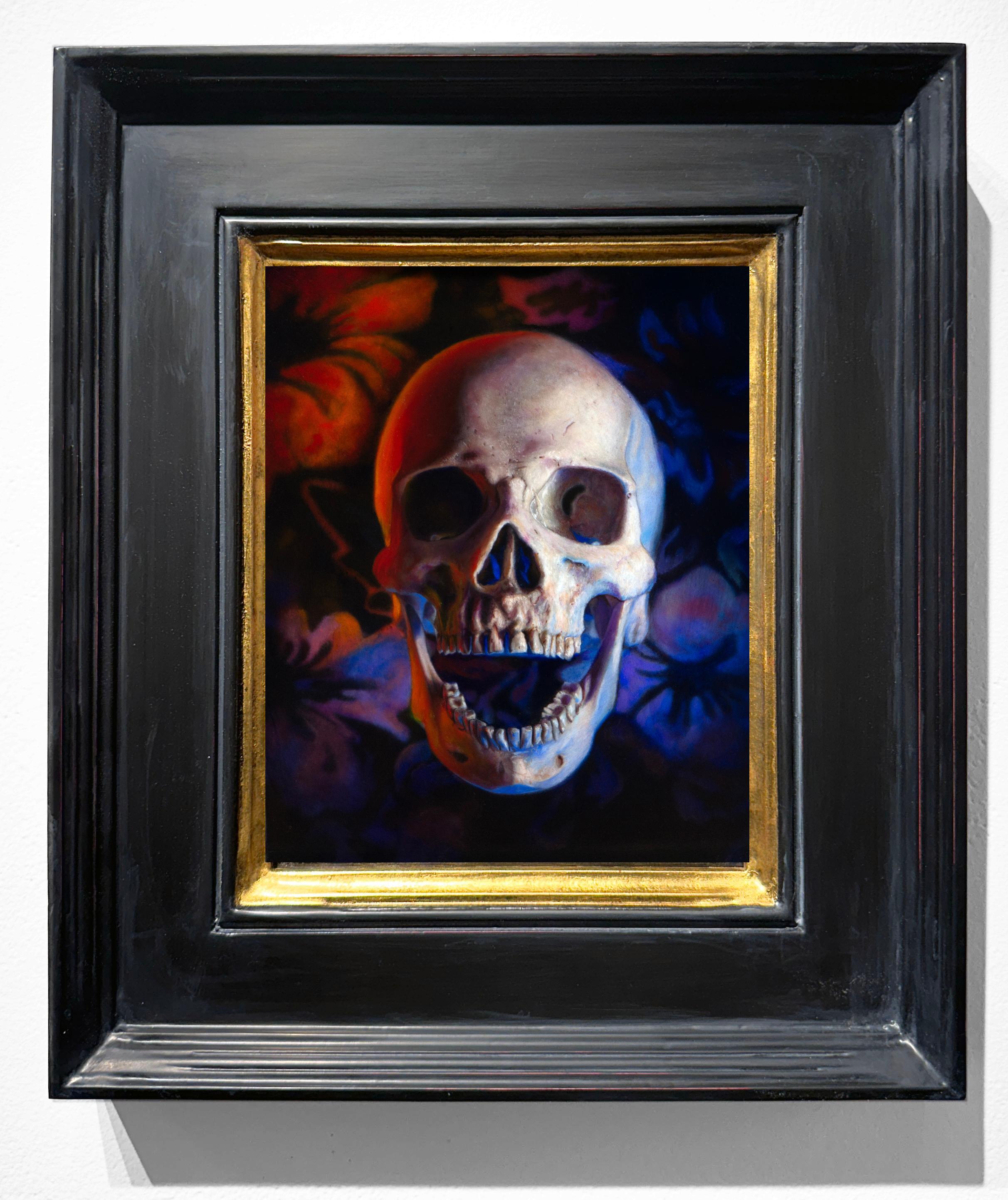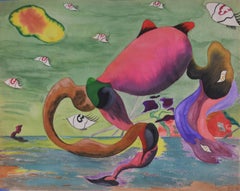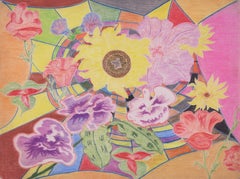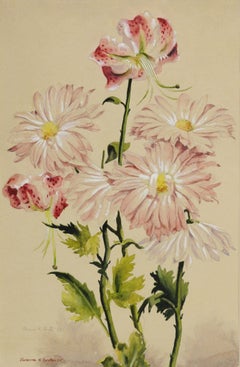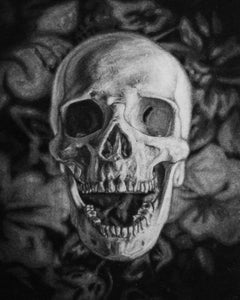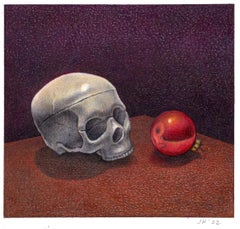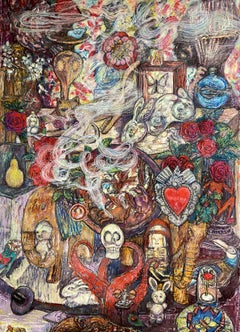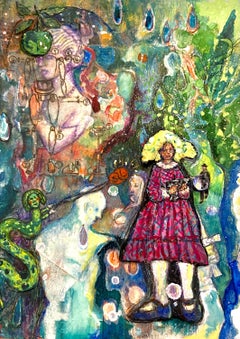Items Similar to Surrealist landscape with skull and red daisy
Want more images or videos?
Request additional images or videos from the seller
1 of 8
Charles Harris ( Beni Kosh )Surrealist landscape with skull and red daisy
$1,200
£911.02
€1,042.01
CA$1,676.57
A$1,864.72
CHF 973.70
MX$22,691.61
NOK 12,435.60
SEK 11,662.39
DKK 7,776.93
Shipping
Retrieving quote...The 1stDibs Promise:
Authenticity Guarantee,
Money-Back Guarantee,
24-Hour Cancellation
About the Item
Surrealist landscape with skull and red daisy
Watercolor on paper, 1960-1970
Unsigned
Stamped with the artist's estate stamp verso (see photo)
Provenance: Estate of the artist
Reference: Beni Kosh Collection #67
Condition: Excellent
Image/Sheet size: 14 x 9 3/4 inches
“An African-American born Charles E. Harris, the name under which he painted until the early 1960s when he took the name of Kosh. His paintings span the period 1949-71, and reflect abstract and surreal figurative subjects which include Cleveland street scenes, jazz clubs, and depictions of Christ.”
Courtesy of Rachel Davis Fine Art
“Beni E. Kosh was born as Charles Elmer Harris, in Cleveland Ohio. He changed his name in the 1960’s, which translates to “Son of Ethiopia”. He rarely exhibited or sold his work and was affiliated with the African-American artists’ “Sho-nuff Art Group” and the Karamu House and studied under Cleveland artist Paul Travis. His style is very diverse and he experimented with Cubism, portraiture and abstractions in series. His paintings span from 1949 – 1971, and reflect abstract and surreal figurative subjects, which include Cleveland street scenes, jazz clubs, and depictions of Christ. He received little recognition during his lifetime and was only “rediscovered” literally days after his death when hundreds of his paintings were rescued by an art dealer.”
(Courtesy Pennsylvania Art Conservatory
“The outsider artist Beni Kosh, largely self-trained, born as Charles Harris in Cleveland in 1917, who was heavily influenced by Cubism and Surrealism. In honor of his friendship with the late Armond Cohen, former rabbi at Park Synagogue, Harris late in life adopted a Hebrew name that can be translated as "my son is black" or "son of
Ethiopia."
Courtesy Cleveland
- Creator:Charles Harris ( Beni Kosh ) (1917 - 1993, American)
- Dimensions:Height: 14 in (35.56 cm)Width: 9.75 in (24.77 cm)
- Medium:
- Movement & Style:
- Period:
- Condition:
- Gallery Location:Fairlawn, OH
- Reference Number:Seller: FA94241stDibs: LU14015765852
About the Seller
5.0
Recognized Seller
These prestigious sellers are industry leaders and represent the highest echelon for item quality and design.
Gold Seller
Premium sellers maintaining a 4.3+ rating and 24-hour response times
Established in 1978
1stDibs seller since 2013
799 sales on 1stDibs
Typical response time: <1 hour
Associations
International Fine Print Dealers Association
- ShippingRetrieving quote...Shipping from: Fairlawn, OH
- Return Policy
Authenticity Guarantee
In the unlikely event there’s an issue with an item’s authenticity, contact us within 1 year for a full refund. DetailsMoney-Back Guarantee
If your item is not as described, is damaged in transit, or does not arrive, contact us within 7 days for a full refund. Details24-Hour Cancellation
You have a 24-hour grace period in which to reconsider your purchase, with no questions asked.Vetted Professional Sellers
Our world-class sellers must adhere to strict standards for service and quality, maintaining the integrity of our listings.Price-Match Guarantee
If you find that a seller listed the same item for a lower price elsewhere, we’ll match it.Trusted Global Delivery
Our best-in-class carrier network provides specialized shipping options worldwide, including custom delivery.More From This Seller
View AllSurrealist landscape with organic shapes
By Charles Harris ( Beni Kosh )
Located in Fairlawn, OH
Surrealist landscape with organic shapes
Watercolor on paper, 1960-1970
Signed CE Harris lower right corner (see photo)
Stamped with the artist’s estate stamp verso (see photo)
Reference: Beni Kosh Collection Estate Stamp #705
Provenance: Estate of the artist
A wonderful example by one of the few African American Surrealist painters.
“An African-American born Charles E. Harris, the name under which he painted until the early 1960s when he took the name of Kosh. His paintings span the period 1949-71, and reflect abstract and surreal figurative subjects which include Cleveland street scenes, jazz clubs, and depictions of Christ.”
Courtesy of Rachel Davis Fine Art
“Beni E. Kosh was born as Charles Elmer Harris, in Cleveland Ohio. He changed his name in the 1960’s, which translates to “Son of Ethiopia”. He rarely exhibited or sold his work and was affiliated with the African-American artists’ “Sho-nuff Art Group” and the Karamu House and studied under Cleveland artist Paul Travis. His style is very diverse and he experimented with Cubism, portraiture and abstractions in series. His paintings span from 1949 – 1971, and reflect abstract and surreal figurative subjects, which include Cleveland street scenes, jazz clubs, and depictions of Christ. He received little recognition during his lifetime and was only “rediscovered” literally days after his death when hundreds of his paintings were rescued by an art dealer.”
(Courtesy Pennsylvania Art...
Category
20th Century Surrealist Abstract Drawings and Watercolors
Materials
Watercolor
Surrealist landscape with animal and figures
By Charles Harris ( Beni Kosh )
Located in Fairlawn, OH
Surrealist landscape with doorway, animal and figures
Watercolor on heavy paper, n.d.
Unsigned
Stamped with the artist's estate stamp (see photo)
Provenance:
Estate of the artist
R...
Category
Late 20th Century Surrealist Landscape Drawings and Watercolors
Materials
Watercolor
untitled (Reclining Female Nude)
By Charles Harris ( Beni Kosh )
Located in Fairlawn, OH
Aka Beni Kosh
Still Life with Flowers
Colored pencil on paper
Unsigned
Signed with the estate stamp on reverse (see photo)
Estate No. 716
Condition: Soft fold through image, wri...
Category
1960s Contemporary Still-life Drawings and Watercolors
Materials
Gouache
Chrysanthemums and Tiger Lilies
By Clarence Holbrook Carter
Located in Fairlawn, OH
Chrysanthemums and Tiger Lilies
Signed and dated lower left (twice), see photo
Watercolor on paper, 1935
A symbol of the sun, the Japanese consider the or...
Category
1930s Realist Drawings and Watercolor Paintings
Materials
Watercolor
Flower Studies
By Mary Spain
Located in Fairlawn, OH
Unsigned
Graphite and colored pencils on laid paper
Category
Mid-20th Century Surrealist Still-life Drawings and Watercolors
Materials
Color Pencil, Graphite
Impossible Solutions at The Fountain of Youth
Located in Fairlawn, OH
Impossible Solutions at The Fountain of Youth
Collage on paper, 1987
Signed with the artist's initials and datedlower left
Condition: Good, with the ...
Category
1980s Surrealist Figurative Drawings and Watercolors
Materials
Paper
You May Also Like
Vanitas III (Study) - Still Life Drawing of a Human Skull & Flowers
By Matthew Cook
Located in Chicago, IL
Matthew Cook
Vanitas III (Study)
Charcoal & Chalk on Paper
10h x 8w in
25.40h x 20.32w cm
FRAMED DIMENSIONS
16h x 14w x 1d in
40.64h x 35.56w x 2.54d cm
MLC014
Bio:
Matthew Cook ...
Category
2010s Old Masters Still-life Drawings and Watercolors
Materials
Paper, Chalk, Charcoal
Skull and Ornament - Vanitas, Still Life, Color Pencil Drawing, Framed
By John Hrehov
Located in Chicago, IL
Drawings of skulls are often called vanitas, which often contain collections of objects symbolic of the inevitability of death and the transience and vanity of earthly achievements and pleasures; it exhorts the viewer to consider mortality and to repent. This still life vanitas drawing is matted with a heavy white mat and framed in a bronze toned wooden frame measuring 15.75 x 16.25 inches.
John Hrehov
Skull and Ornament
colored pencil on paper
7h x 8w in
17.78h x 20.32w cm
JHR006
John Hrehov
Education
1985 MFA-Painting, University of Illinois at Urbana-Champaign
1981 BFA-Painting, Cleveland Institute of Art, Cleveland, OH.
Solo Exhibitions
2017 John Hrehov, Paintings and Drawings. Tom Thomas...
Category
2010s Surrealist Still-life Drawings and Watercolors
Materials
Archival Paper, Color Pencil
"Souvenirs" - pastel drawing, nature, plants, still life, surreal, skull, heart
Located in Atlanta, GA
This piece is framed measuring 46 by 34 inches.
Based in Carrollton, Georgia, Erin Dixon is a mixed media artist whose work bridges realism and surrealism....
Category
2010s Contemporary Landscape Drawings and Watercolors
Materials
Pastel, Archival Paper
"Freudian Landscape" - pastel drawing, landscape, figurative, surrealism, skull
Located in Atlanta, GA
This piece is framed measuring 17 by 14 inches.
Based in Carrollton, Georgia, Erin Dixon is a mixed media artist whose work bridges realism and surrealism....
Category
2010s Contemporary Landscape Drawings and Watercolors
Materials
Pastel, Acrylic
Still Life with Skull
By Nikos Kanarelis
Located in New York, NY
Untitled
Graphite on paper
18 1/2 × 27 3/5 in / 47 × 70 cm
Nikos Kanarelis was born in Athens, Greece in 1975 where he now lives and works. Βetween 1999 and 2004 he studied at t...
Category
21st Century and Contemporary Realist Still-life Drawings and Watercolors
Materials
Paper, Graphite
Vanitas III - Still Life Painting of a Human Skull & Flowers, Oil on Aluminum
By Matthew Cook
Located in Chicago, IL
Inscription on back of drawing:
Laughter is mad, and reckless mirth—
What does she in this weary earth?
Should Wealth, or Fame, Our life employ.
Death comes, our labour to destroy;
...
Category
2010s Old Masters Still-life Paintings
Materials
Oil, Acrylic
More Ways To Browse
Skull Art
Painting With A Skull
Vintage Daisy
Charles Littler
Jazz Club
African American Artist Still Life
Skull Drawing
Ethiopian Painting
Rabbi Drawing
Vintage Daisy Painting
Africa Skull
African Skull
Kosh Kosh
Still Life Photography
Painting Of A Salon
Abstract Art Orange
Painting By Women Artists
Family Abstract
